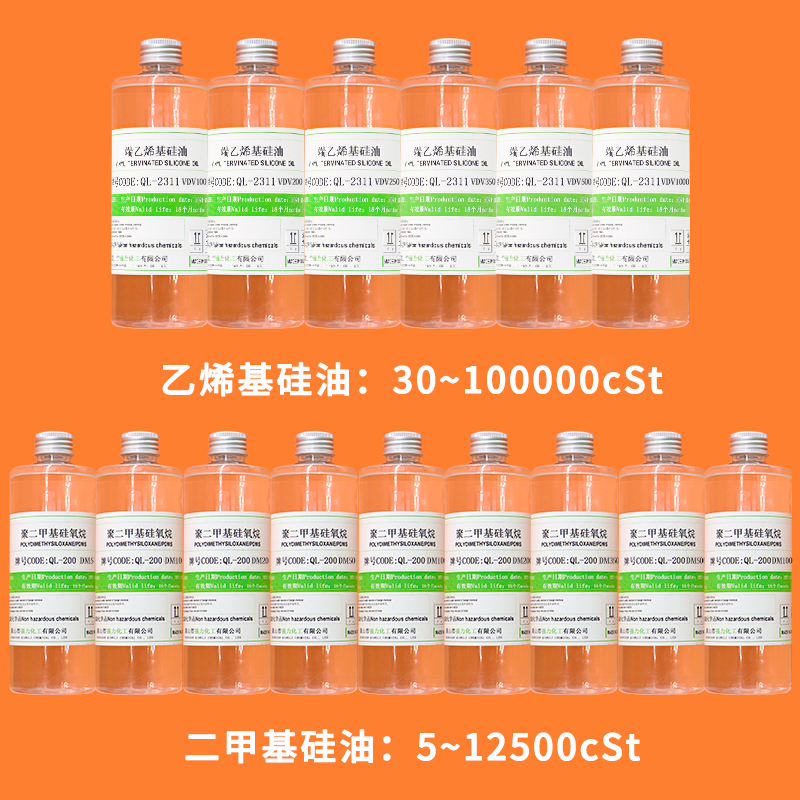1. General cleaning steps (key principles)
Pretreatment:
First, use a paper towel, rag or scraper to absorb/scrape off excess silicone oil on the surface to avoid diffusion (the higher the viscosity of the silicone oil, the more patience is required to clean it).
If the silicone oil has penetrated or dried, it needs to be softened or dissolved before processing.
2. Choose according to available cleaning agents
1. Organic solvents (highly efficient, suitable for stubborn stains)
Applicable scenarios: Solvent-resistant materials such as tiles, marble, and cement floors (avoid using wooden floors and painted floors, which may corrode the surface).
Optional solvents:
Gasoline, kerosene, diesel: non-polar solvents that can dissolve silicone oil. Wipe with a rag, and then use detergent water to remove the oil smell.
Acetone, isopropyl alcohol (IPA), toluene: Stronger dissolving ability, suitable for stubborn residues (acetone needs to be careful of its corrosiveness to certain plastics/rubbers, test on a small scale first).
White oil (n-hexane), stain remover: Commonly used in industrial cleaning, highly volatile, just wipe and volatilize (be careful to stay away from fire).
Operation: Soak the stain with solvent for 1-2 minutes, wipe repeatedly until dissolved, and finally mop with clean water.
2. Surfactant (mild, suitable for household use)
Applicable scenarios: All materials (especially wood floors and epoxy floors that are afraid of solvents), remove silicone oil through emulsification.
Optional cleaning agents:
Detergent/laundry detergent: dilute with warm water (slightly higher concentration), soak the stain for 5-10 minutes, and scrub with a stiff brush or scouring pad (it works better for low-viscosity silicone oil, and high viscosity requires increased scrubbing strength).
Kitchen oil stain cleaner: Contains strong surfactants and solvents. After spraying, wait for 2-3 minutes, wipe and rinse with clean water (some products contain alcohol, which may have a slight effect on some materials, test first).
Operation: If it is not clean once, repeat 2-3 times, and the effect will be better with hot water (high temperature can reduce the viscosity of silicone oil and enhance emulsification).
3. Special material treatment
Wood floor / solid wood floor:
Strong solvents (such as acetone and toluene) are prohibited to avoid damaging the paint surface.
First use a dry cloth to dry, then gently wipe with diluted neutral detergent water (or special wood floor cleaner), and finally wipe with a dry cloth to avoid water penetration.
Carpet / fabric:
First use a blade to scrape off the solidified silicone oil on the surface, then use a paper towel dipped in gasoline / isopropyl alcohol to pat the stain (from the outside to the center to prevent it from spreading), and finally soak and wash with laundry detergent (may need multiple times).
3. Industrial/Large Area Cleaning (Optional)
Steam Cleaning: High-temperature steam can soften silicone oil. It is suitable for cement floors, tiles and other hard floors with high-pressure water guns or steam mops (the effect is more obvious for low-viscosity silicone oil).
Absorbent materials: If the silicone oil does not spread, you can sprinkle diatomaceous earth, talcum powder, sawdust and other absorbent powders, let it stand for 1 hour, then sweep it clean, and then wipe the residue with a detergent.
4. Precautions
Safety protection: Keep ventilation when using organic solvents, wear gloves to avoid skin contact (some solvents are toxic or irritating), and stay away from fire sources (most are flammable).
Material testing: Test the detergent in the corner of the floor before cleaning, and use it on a large area after confirming that there is no discoloration or corrosion.
Patient handling: High-viscosity silicone oil (such as 50 cSt) may form a stubborn film layer after drying, which needs to be dissolved or emulsified multiple times to avoid scratching and damaging the floor.
Summary
First choice: Use acetone/gasoline + wipe for stubborn stains (solvent-resistant floors); use detergent water + scrub for gentle cleaning (general purpose).
Key: Using the principle of "dissolving (organic solvent)" or "emulsifying (surfactant)", combined with the floor material selection plan, pretreatment and multiple cleaning are the key to removing residues.




